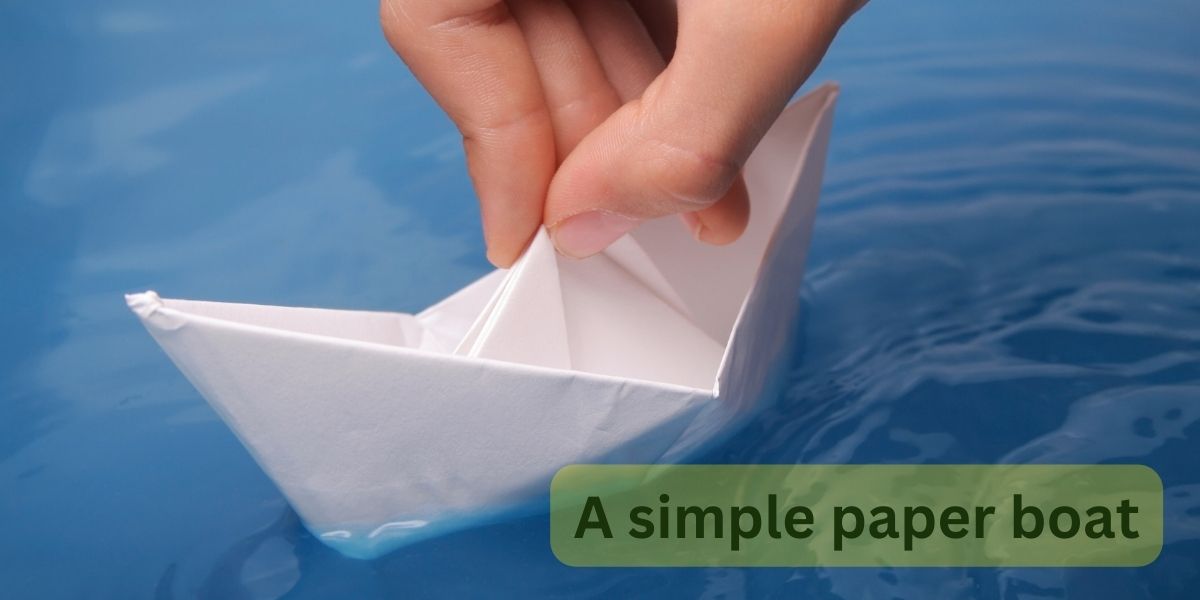Here’s how:
- Buoyancy: Making a paper boat involves understanding the concept of buoyancy. When you place the paper boat in water, it floats due to the principle of buoyancy, which states that the upward force exerted by the water (buoyant force) is equal to the weight of the water displaced by the boat. This concept is fundamental to understanding why objects float or sink in fluids.
- Displacement: As the paper boat floats on the surface of the water, it displaces a certain volume of water equal to its own weight. Understanding displacement helps explain why ships and boats of different sizes and shapes can float, as long as the weight of the water displaced is greater than the weight of the boat.
- Surface Tension: Surface tension refers to the cohesive forces that hold water molecules together at the surface of a liquid. When you place the paper boat on the water’s surface, surface tension helps support the weight of the boat, allowing it to float. Exploring the effects of surface tension can lead to a better understanding of intermolecular forces and their role in everyday phenomena.
- Drag and Resistance: As you push the paper boat through the water, you can observe resistance or drag, which opposes the boat’s motion. Experimenting with different shapes and designs of paper boats allows you to explore how factors like hull shape, surface area, and water resistance affect the boat’s speed and maneuverability.
- Streamlining and Fluid Dynamics: Designing an efficient paper boat involves considering principles of streamlining and fluid dynamics. Smooth, streamlined shapes experience less resistance as they move through the water, while rough or irregular shapes encounter more resistance. By experimenting with different hull designs and observing how they perform in water, you can learn about the principles of fluid flow and aerodynamics.
- Gravity and Stability: Understanding the interaction between gravity and stability helps explain why the paper boat remains upright and balanced in water. The boat’s center of gravity must be positioned low enough to prevent it from tipping over. Exploring stability concepts can lead to insights into the design and stability of ships and other floating vessels.
- Material Properties: Exploring the properties of paper as a material—such as flexibility, strength, and water absorption—provides insights into material science and engineering. Understanding how different materials behave in water and interact with external forces contributes to the design and construction of watercraft and other structures.
By engaging in hands-on experimentation and observation with simple paper boats, you can gain a deeper appreciation for the scientific principles that govern the behavior of objects in water and enhance your understanding of physics, fluid dynamics, and engineering concepts.


No responses yet